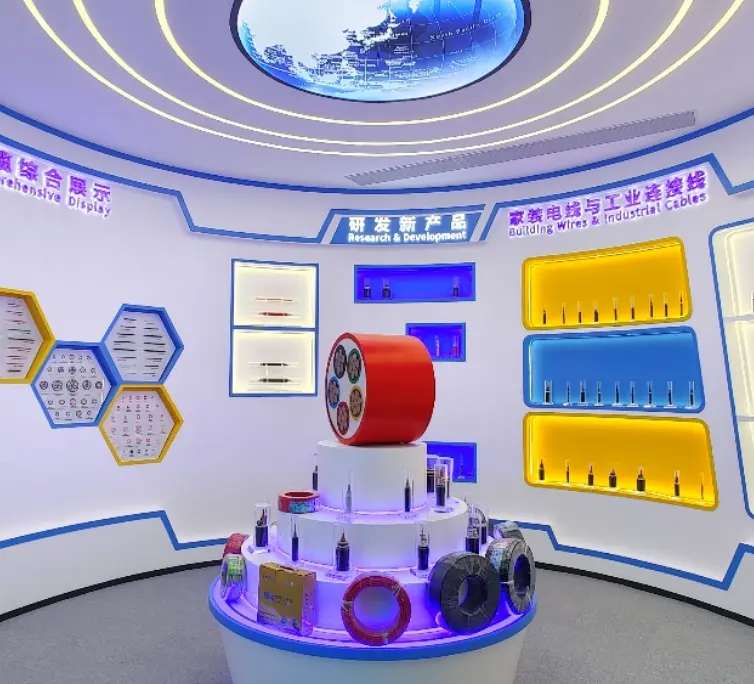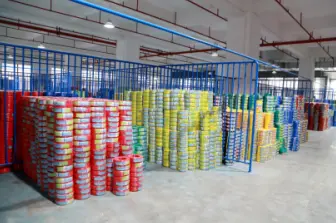Flame-Resistant vs Fire-Resistant Cables: Key Differences
In recent years, fire incidents in power systems have become increasingly frequent worldwide, with most incidents caused by the ignition of power cables, leading to power supply interruptions. Therefore, in places such as power plants, substations, and railways, which have a large amount of electrical equipment and densely laid cables, it is becoming increasingly important to use flame-resistant cables to prevent the spread of fire and fire-resistant cables to ensure uninterrupted power supply for critical circuits. However, some electrical designers may confuse the concepts of flame-resistant cables and fire-resistant cables, and lack understanding of their structures and characteristics, leading to incorrect selection based on power supply requirements. Therefore, fully and accurately understanding flame-resistant and fire-resistant cables is the first step in choosing the right cables for the proper scenarios.
Overview of Flame-Resistant Cables and Fire-Resistant Cables
A fire-resistant cable refers to a cable that can continue to function safely for a certain period of time under flame exposure. The fundamental feature is its fireproof material. It has excellent fire-resistant performance and can be used in high-temperature environments. Under fire conditions, it works for 120 minutes; in an automatic sprinkler environment, it works for 15 minutes. It is applied in high-rise buildings, underground railways, above-ground transportation vehicles, underground streets, large power stations, and important industrial enterprises related to fire safety and emergency rescue.
Flame-resistant cables are a special type of fire-resistant cable. During combustion, the spread of flames is confined within a limited range, and the residual flame will self-extinguish within a specified time. Flame-resistant cables have fireproof and explosion-proof properties, and they are not affected by electromagnetic fields. In case of fire, they may be damaged but can prevent the spread of flames, protecting other equipment and avoiding further damage.
Installation of Fire-Resistant Cables
In addition to wiring specifications, the installation of fire-resistant cables should also follow these key points:
Fire-resistant cables should not be bent 90° directly (as the fireproof layer will crack under long-term stress).
All terminal connections of fire-resistant cables should use moisture-proof protection (since the fireproof layer is moisture-absorbent, which can affect the electrical properties of the cable).
Considerations for Selecting Fire-Resistant Cables
Because fire situations can be quite complex, factors such as the amount of surrounding combustible materials, flame temperature, flame impact, and water spray during firefighting must be taken into account:
The rated voltage is limited to 0.6/1KV and below (for rated voltages higher than 0.6/1KV, special fire-resistant cables should be used).
The cable conductor cross-section should be chosen to be 1-2 sizes larger than the design cross-section. Smaller sizes like 0.5mm² or less are not recommended, as they may cause conductor fusing (for reference).
For control cables, it's preferable to choose cables with fewer cores, as cables with too many cores may have a higher probability of short circuits.
For power control cables, the outer diameter should preferably be under 20mm. Cables larger than 20mm will increase the burn time.
Differences Between Flame-Resistant and Fire-Resistant Cables
Principle Differences
The principle of flame-resistant cables containing halogens is the flame-retardant effect.
The principle of halogen-free flame-resistant cables is to lower the temperature.
The principle of fire-resistant cables is mica material.
Structural Differences
The basic structure of flame-resistant cables: (1) Insulation layer (2) Jacket and outer protective layer (3) Wrapping and filling.
The basic structure of fire-resistant cables: A fire-resistant layer is added between the conductor and insulation layer, and the fire-resistant layer is made up of multiple layers of mica tape. Because different mica tapes have different allowable working temperatures, the key to the fire-resistant performance of the cable is the mica tape. Fire-resistant cables can withstand prolonged combustion and ensure the normal operation of circuits.
Pros and Cons
Flame-Resistant Cables: Lower cost, controls the spread of flames within a limited range, improving the fire protection level of the cable line.
Fire-Resistant Cables: Produce less acidic smoke, greatly enhance fire-resistant and flame-retardant performance, and maintain the integrity of the line. Fire-resistant cables can maintain normal power supply for a period of time during a fire, while flame-resistant cables do not have this feature.
In conclusion, both flame-resistant cables and fire-resistant cables have their unique characteristics. The appropriate cable should be selected according to the usage scenario.
Latest News & Blog
 English
English  français
français  Deutsch
Deutsch  العربية
العربية  tiếng việt
tiếng việt  ไทย
ไทย  čeština
čeština  Indonesia
Indonesia  Eesti
Eesti  български
български  slovenčina
slovenčina 



